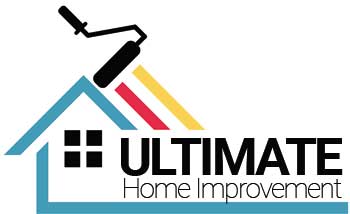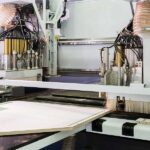Designing your office is about more than just choosing furniture and colours. It’s about making a space that reflects the company’s culture. It should boost productivity and impress clients.
Moving to a new office or upgrading your workspace? Choosing the right design is key. It can affect your company’s performance. There are many factors to consider. They include design, lighting, furniture, and utility. You will find this article helpful when choosing the right office design.

Understand Your Company’s Needs and Culture
Choosing the appropriate office design starts with knowing the demands and culture of your business. Your workplace should be designed in line with your company’s operations and the message you wish to get out to clients and staff.
First, think about the nature of your work. Does your team require a lot of calm, concentrated time, or are everyday operations mostly dependent on teamwork?
While companies that depend mostly on teamwork could gain from an open-plan arrangement that promotes communication, businesses that need quiet, concentrated workspaces may want private offices or cubicles.
Your design decisions also should be influenced by your company culture. If you own a creative agency, for instance, you might choose striking hues, inventive furnishings, and adaptable areas that encourage imagination. Conversely, a legal company can go towards a more conventional, professional appearance, including private offices and a formal greeting room.
At this point, office movers may be quite helpful in helping you evaluate the actual space that is accessible and guide you on how best to arrange it to suit your requirements. They can also help to spot any structural constraints that might influence your design decisions.
Consider the Layout and Space Utilisation
One important element influencing workflow and production in your office is its design. Consider how you wish to use the space at hand when selecting an office design.
Popular for their capacity to promote staff communication and teamwork, as well as open-plan layouts. This architecture breaks down obstacles and fosters a more inclusive space where ideas might run unhindered.
Even so, open areas can sometimes be distracting. As a result, it is important to consider noise levels and privacy demands.
Private offices or cubicles could be a better choice for companies needing discretion or focus. These areas give staff members their location to focus on their work, free from distractions. Privacy should be balanced, though, with chances for group projects.
Many firms are choosing hybrid layouts that mix private quarters with open spaces right now. This design provides the best of both worlds: privacy when wanted and cooperation when needed. To accommodate various working habits, a hybrid arrangement can include quiet areas, conference rooms, and breakout spaces.
Think about potential expansion while you design the layout. Choose a design that will readily change with the growth of your company. By planning out the area and guiding your arrangement, office movers can help you make sure everything fits precisely and runs effectively.
Prioritise Comfort and Ergonomics
Designing your office should first concern employee comfort. A pleasant workstation is, after all, a productive one. Ergonomics is quite important in minimising workplace injuries and improving employee well-being, so it is advisable to select furniture and tools that support good posture and lower strain.
- Chairs – Invest in premium ergonomic chairs with enough lumbar support and movable elements. Match these with desks that let the wrists, elbows and eyeballs line up correctly. Think of sit-stand workstations, which give freedom and encourage mobility all through the day.
- Lighting – Another crucial element of office design is the quality of lighting. Since natural light improves mood and productivity, if at all possible, workstations and workspaces should be set next to windows. Use LED lighting that mimics daylight and lowers eye strain in places without natural light.
- Acoustics – Think about the acoustics of your office since noise can be a great source of disturbance there. Sound-absorbing materials, acoustic panels, and carpeted flooring help to lower noise levels and provide a more comfortable workplace.
- HVAC system – Maintaining a comfortable temperature in the office is essential to keeping staff members content and attentive. Make sure your HVAC system runs effectively and that staff members have some influence over their particular workspaces—that is, the ability to change the temperature or run personal fans.
Reflect on Your Brand Identity
- Colours – Choose a colour scheme that captures the personality of your brand since colours greatly affect emotion and perception. Blue is a common choice for business offices since, for instance, it is usually connected with professionalism and confidence. Conversely, vivid colours like red or orange may invigorate a room and inspire invention and creativity.
- Furniture and décor – Your brand identification can also be communicated by the furniture you choose. While classic, traditional items might express dependability and stability, sleek, modern furniture could point to a forward-looking, tech-savvy organisation. Not overlooked is the décor—artwork, plants, and branded components like logos or company slogans – all of which improve your place and support your brand.
- Welcome area – The first point of interaction visitors usually have is the welcome area. Hence, it should leave a significant impact. Select a design and furniture that capture your brand and foster a friendly environment. Think about how layout, lighting, and signage might create a professional atmosphere.
Plan for Technology Integration
Any office design in the modern day depends fundamentally on technology. From computers and phones to printers and smartboards, your workplace must be furnished with the correct equipment to enable your company operations. Still, it’s more than just about having the correct tools; it’s about subtly including them in your design.
Make sure your office design allows the required cabling and connectivity for your technology. Anticipate lots of data ports, wifi connectivity, and power outlets. To keep wires neat and out of sight, think about cable management solutions, therefore preserving a neat workstation.
Meeting rooms should use the newest technologies to support cooperation and communication. This could call for smartboards, video conference systems, and top-notch audio gear. Lay out your conference rooms so that technology is readily available and user-friendly.
Technology is always changing. Hence, your office should be built with consideration for this adaptability. Select modular furniture and systems that, as new technologies emerge, may be readily changed or rearranged.
Experience in technology integration would help office movers ensure the proper setup of their IT systems in their new office. From the setup of workstations to the installation of meeting room equipment, they may help with wiring to guarantee that everything is running from the start.
Future-Proof Your Design
Finally, future-proofing your office design is vital. Your office will have to be flexible to change as your company develops. A well-designed workplace should be adaptable enough to let team size, technology, and working style vary.
Invest in modular furniture that will be readily rearranged as your requirements evolve. This adaptability lets you change your office arrangement without having to spend money on totally fresh furnishings. For your HVAC, IT infrastructure, and other critical services, pick scalable systems.
The result guarantees that as your company expands, your office can manage higher demand. Include sustainable design elements in your workplace. Such modifications may require recycled materials, energy efficiency, or a design bestowing maximum natural light.
Not only can this future-proof your office by lowering environmental impact, but it can also attract environmentally-minded clients and staff.
By making sure all systems and furniture are placed in a way that allows for simple reconfiguration and scaling, office movers may help to set up a flexible and future-proof office.
Conclusion About Choosing the Right Office Design
The choice of office design is a crucial one that can affect the output, culture, and brand identification of your business. Understanding your needs, weighing layout and space use, giving comfort priority, reflecting your brand, including technology, and future-proofing your design will help you build an office that supports the growth of your company.
Working with a reliable moving company can help you to guarantee that your vision is carried out effectively and smoothly, thereby enabling you to concentrate on what counts – expanding your company in an environment that motivates and empowers your staff.
This article is published by Ultimate Home Improvement blog uk




